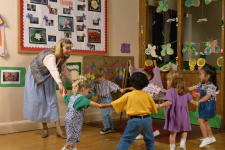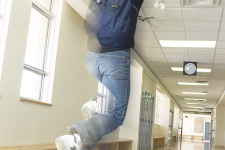Creating Positive Classroom Rules

In order to create an environment of learning, it is important to enforce positive classroom rules. These rules would provide students with positive behavior models to follow. The positive classroom rules need to be designed with certain principles in mind.
Be limited in number (eg. 4-5) so that students can remember them with ease. […]
Classroom Behavior: Root Causes & Drivers
A student’s behavior is not random but is determined by one or more root causes or behavioral drivers, the most common of which include:
Social attention (adult or peer)
A student may call out sarcastic comments in class because she gets peer attention for doing so.
Escape or avoidance of tasks, settings, or situations
A student who […]
Classroom Behavior: ABC Timeline

Behaviors occur over time and therefore are well represented through a sequence. The ABC Timeline refers to behavior elements arranged in a time sequential fashion:
Antecedent
Behavior
Consequence
Antecedent:
One or more environmental factors or events that appear to trigger student behavior. Altering the antecedent may prevent the behavior or make the behavior more likely to occur.
An […]
Classroom Behavior Technique: Student Interview

Questions similar to these are asked to help the student understand the impact of their behavior on others:
How does this behavior impact your grades?
Are you able to make and keep friends?
Do you like school? Why or why not?
Is your current behavior working for you?
How does this behavior make you […]
Classroom Behavior Basics: Environment
A student’s classroom behavior is a product of the interaction between that student’s personal qualities, including his or her learning history, and the many factors in that student’s current instructional environment.
For example, a student may behave very differently depending on the peers with whom he or she is […]
Classroom Environment Impacts Behavior

Physical environment has a direct impact on behavior. Consider the following aspects of environment: space, temperature, visuals, texture, scents and sounds.
Arrange the physical layout of a classroom (e.g., furniture, location of student work materials) to ensure that students can move easily throughout the room with minimal distractions and no ‘traffic jams’ during group transitions.
Check […]
RTI Tip for Teachers Conducting a Student Observation

When students present behaviors that consistently interfere with teaching and learning, school staff must objectively identify and quantify those behaviors. The teacher, or another team member, accomplishes this by conducting one or more systematic twenty to thirty minute student observations. This identifies the current rate of behavior, referred […]
The Behavior Stream
Individuals are always performing SOME type of behavior: watching others, sleeping, talking, drawing, writing, moving, eating, touching. This is referred to as the behavior stream.
When people are fully engaged in positive behavior, they are less likely to get ‘off-task’ or display problem behavior. Tasks most likely to capture behavior in […]
Classroom Behavior Basics: Language

Various forms of punishment, including physical, were once used widely in school settings to manage student behaviors. Today, research indicates that when used regularly to manage behaviors, punishment is often accompanied by significant negative side effects. It is recommended to provide consistent consequences that TEACH expected behaviors rather than PUNISH misbehaviors […]



